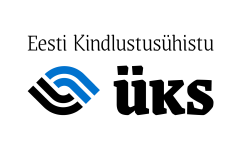Following hot on the heels of our recent posts on where to buy in Tallinn, Estonian real estate terminology getting lost in translation, and top tips when buying in Estonia, all of which we hope you’ve found helpful, we thought we’d continue on that trajectory.
This time, the topic is letting out properties. So here are the main ‘dos’ when letting out an apartment here or, for the most part, anywhere:
Many people become a ‘landlord’ in Estonia or elsewhere for that matter with little knowledge of the realities of what the process involves.
Even if you are an existing landlord already, you can never have too much advice, and there may be some differences between Estonia and wherever you hold your other properties.
A lack of knowledge about being a landlord can lead to such unwanted scenarios as unexpected expenses, void periods or problem tenants.
To help you avoid any of these undesirable situations, here are some of the most significant do’s and don’ts when letting out property in Estonia.
Do…
1) Make your property as appealing as possible to potential tenants (neat and clean, in order, decorated). If the property was formerly your personal home or part time home, or contains fixtures and fittings left over from a former occupant, be prepared to make the necessary internal alterations in order to successfully attract a tenant. One’s own personal tastes may not match with those of other people. Experience has shown that tenants on the whole prefer light, neutral colours and modern, contemporary (but not too extreme) fixtures and fittings. Time to get rid of that lime-green ceiling or novelty lampshade! ‘Minimal is king’, is a useful watchword here. At the same time, thoughtfully-located and attractive pictures which are in keeping with the overall design of the apartment can make all the difference, as can a few well-placed mirrors. Plants also make a huge difference, although naturally there is the issue of getting tenants to water them once an agreement has begun. The property should also be wisely furnished (e.g. take away unnecessary furniture pieces, have modern and clean furniture which is in keeping with the property etc.)
2) Steer clear of void periods at all costs, even if this means being flexible about rental levels. This also means you should be flexible in terms of rental periods, for example having a short term let for part of the year and longer terms during the remainder, to maximise profits and minimize void periods. This can have the effect of earning 10-15 per cent more per year. Naturally having a fully-managed service will mean that the hassle of organising this is out of your hands.
3) Consider letting the property out as a part-furnished property. Whilst many tenants may be travelling light or interested in short term lets and therefore more likely to choose a fully-furnished property, some scope for their own additions to the furniture can be attractive. What constitutes essential furniture in a part-furnished property? Naturally beds should be provided in the primary bedrooms at the very least; mattresses should be included only if they are relatively new (ie no more than 4-5 years old) and clean. Sofas and chairs should also be included where necessary, and substantial storage space in particular for clothes (wardrobes, walk in wardrobes, chests of drawers etc) is also a must. Kitchen fixtures and fittings should natrually be included and utensils, cutlery, crockery etc can also be provided inexpensively.
4) Provide as much detailed description of your property as possible. There are two very good real estate portals (kv.ee and city24.ee) which list properties available under quite detailed search parameters, in English and with plenty of photos. Your real estate broker will also be able to advise and guide you through the process of marketing your property.
5) Once you have a tenant, make sure that you have a proper lease agreement in place (certainly ask for a tenant’s documentation; get all the important terms of the tenancy in writing). You should also check the potential tenant’s background if possible (credit info, personal info, family, pets, smoking etc). An agent can advise you on this. It is worth having a detailed inventory compiled. This will be signed by both landlord and tenant, thus avoiding any unpleasant disputes arising surrounding any damage at the end of a tenancy. It should cover not only major items such as any furniture, but also details of the overall qualities of the walls, painted areas, flooring etc to account for any damage that might occur. You might also consider obtaining property insurance to cover for damage, and a security deposit, usually of one month, is also worth getting. It’s worth having an inventory taken (even in unfurnished properties).
6) Consider getting a property professionally cleaned at the end of a tenancy period. This can work wonders in attracting a new tenant, breathing new life into worn carpets and making grubby tiles sparkling again. First impressions last and it would be a shame to put off a potential tenant simply because of an unpleasant odour or dirty bathroom.
7) A certain amount of reasonable wear and tear should of course be expected, so expect it! Over time items will need to be replaced. As a general rule, fridges and other white goods will need to be replaced as they become outdated or cease to work over the years, and a property will need small redecoration works and maintenance works approximately every four years. Wooden parquet flooring also requires attention from time to time.
8) If you are living outside Estonia, it is well worth arranging for a managing agent who will not only find and reference tenants for you, but also draw up contracts, manage the collection of rents, bill payments, see to any maintenance or emergency repairs which may arise, advise you on any refurbishments that may need doing etc. Keep in touch: your managing agents can advise you about developments at the property, maintenance issues etc, but always respond to emails and queries on this promptly. This will lead to a better relationship with a tenant and an increased likelihood that they will want to stay on.
….and the ‘don’ts’ will follow in a later installment!
 Andrew Whyte
Andrew Whyte
Tallinn Property by Goodson & Red
















